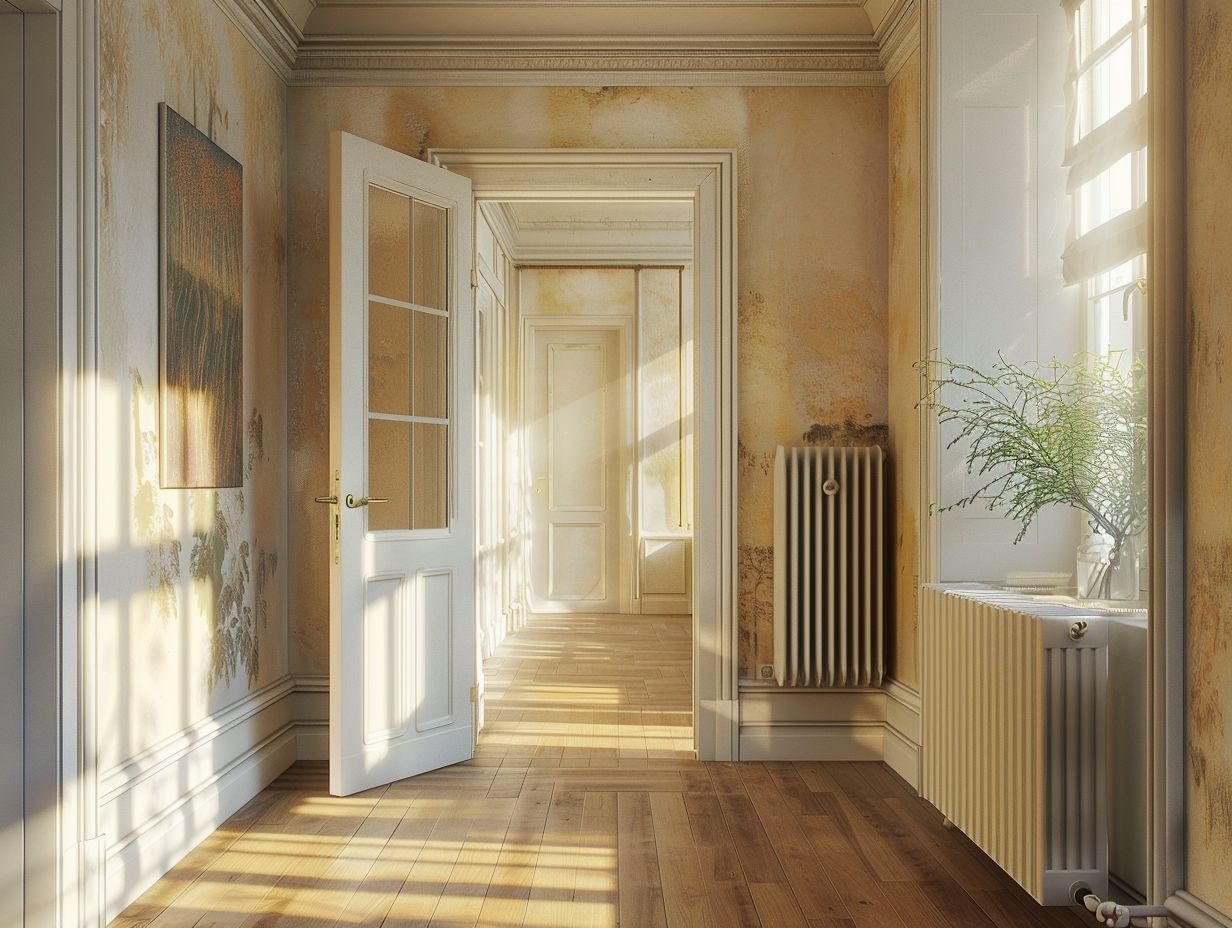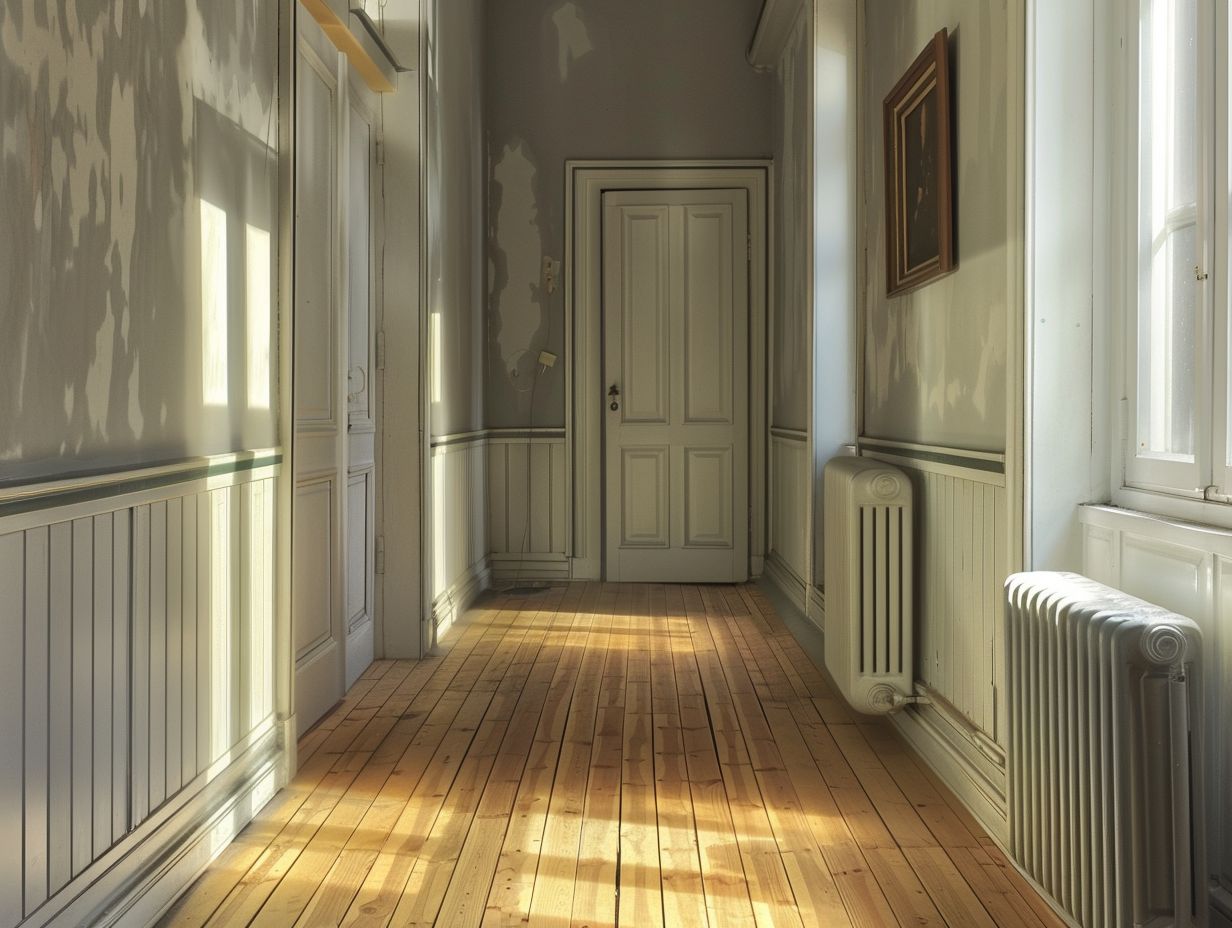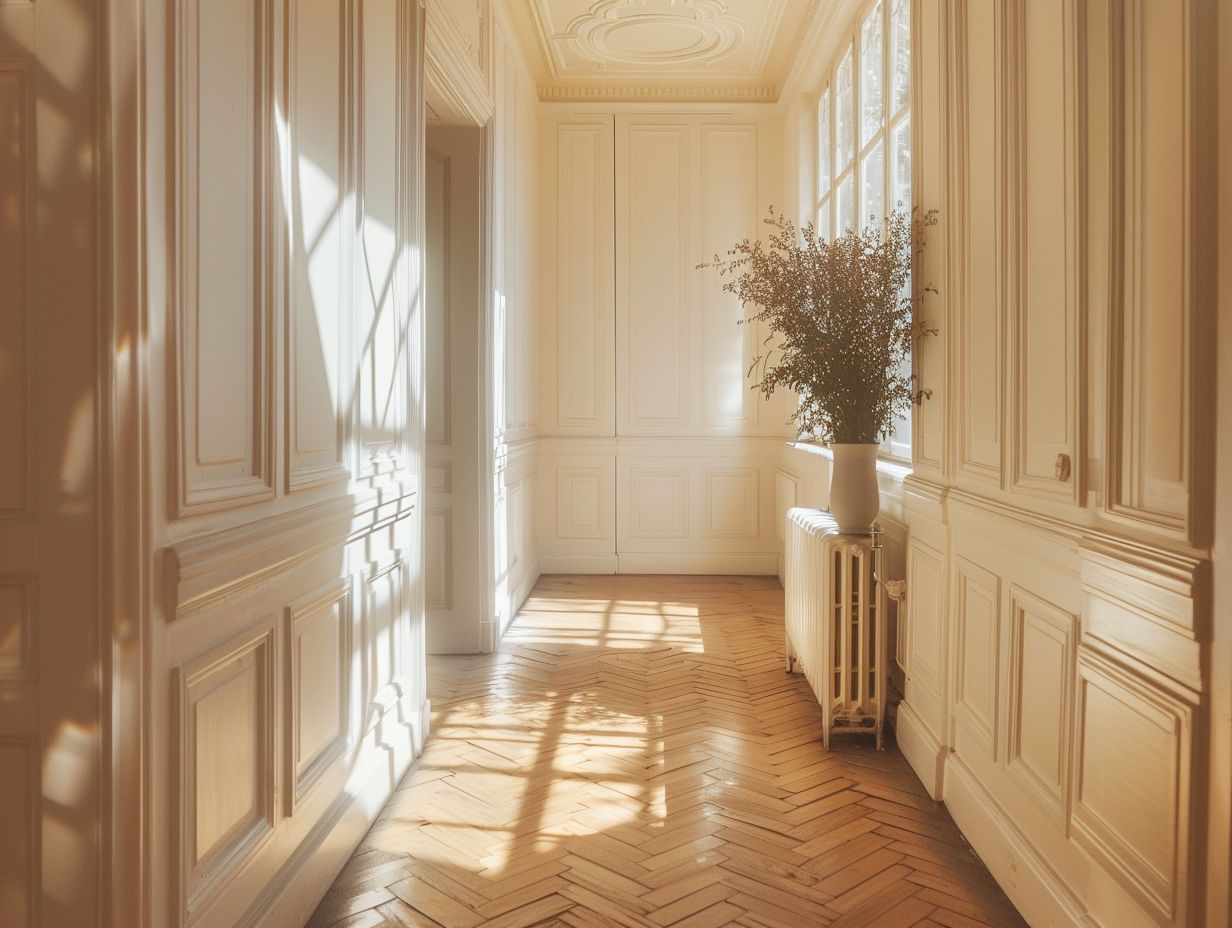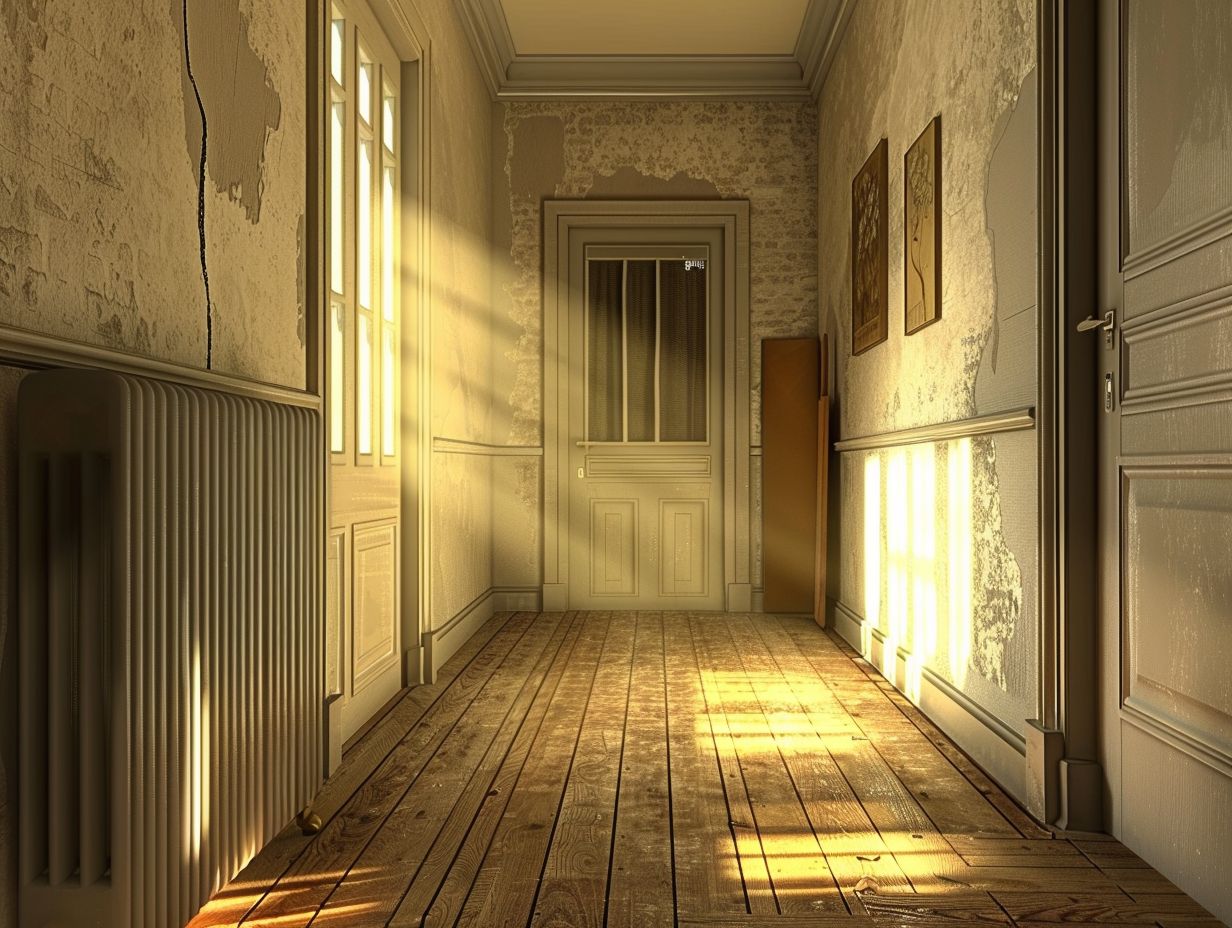Are you facing challenges with a radiator that refuses to heat up?
The following information delves into the intricacies of radiator functionality, prevalent reasons for a radiator not heating, and actions you can implement to resolve the problem. From air obstructions to pipe damage, all potential causes are thoroughly discussed.
Continue reading for maintenance advice aimed at ensuring your radiators operate efficiently, thereby averting any future heating complications. Let’s work together to restore warmth to your hallway!
Key Takeaways:

- Air trapped in the system, blocked/damaged pipes & malfunctioning thermostat are common causes of a non-heating radiator.
- Steps to fix a non-heating radiator include bleeding, flushing, & replacing damaged parts.
- Maintenance tips such as regularly bleeding the radiator can help prevent non-heating radiators & keep them functioning properly.
Common Causes of a Non-Heating Radiator
Non-heating radiators in a heating system can often be attributed to various underlying issues. Common culprits include trapped air, faulty valves, or a malfunctioning circulation pump, all of which can disrupt the efficient distribution of heat.
These issues can result in inefficiencies in the heating process, leading to certain radiators not heating up adequately. For instance, air blockages can impede the proper circulation of hot water, causing uneven heating throughout the system.
Valve malfunctions, such as a stuck or partially closed valve, can restrict the flow of hot water to the radiator. Similarly, a malfunctioning pump may fail to effectively push hot water through the system, leaving certain radiators cold.
Air Trapped in the System
One common reason for a non-heating radiator is air trapped within your system. When air becomes trapped in your heating system, it creates a barrier that hinders the proper circulation of heated water, resulting in decreased heating efficiency.
As a consequence, your radiators may fail to produce sufficient warmth, leaving your rooms cold and uncomfortable.
To address this issue, bleeding your radiators is essential. Bleeding involves releasing any trapped air by opening a valve at the top of the radiator, allowing the air to escape and enabling hot water to flow freely.
Airlocks not only reduce heating efficiency but also place unnecessary strain on your heating system components, potentially leading to malfunctions and increased energy consumption.
Blocked or Damaged Pipes

Blocked or damaged pipes can also result in a non-heating radiator. Accumulated debris or blockages within the system hinder the smooth flow of hot water to the radiator, causing heating issues.
This can lead to uneven heating throughout the space, with some areas being overly warm while others remain cold. In severe cases, blockages can even cause the entire heating system to fail, leaving you without any heat during chilly weather.
To prevent such scenarios, regular maintenance checks are essential. It’s crucial for you to inspect the pipes for any signs of blockages or damage, such as leaks or strange noises. Timely detection and repair of these issues not only ensure efficient heating but also prolong the lifespan of your heating system.
Malfunctioning Thermostat
A malfunctioning thermostat can be a contributing factor to a radiator that is not heating. When the thermostat fails to send a signal to the boiler to heat the water, the radiator will remain cold even when the heating system is running.
This situation can disrupt the entire heating system, leading to discomfort and reduced efficiency. Inaccurate temperature readings are a common issue with thermostats, causing the system to not reach the desired level of heat.
To address these problems, troubleshooting typically involves checking the thermostat settings, ensuring it is level, and replacing batteries if needed. If basic troubleshooting steps do not resolve the issue, it may be necessary to consider replacing the thermostat entirely.
Installing a new thermostat can restore optimal heating performance and create a comfortable living environment.
Steps to Fix a Non-Heating Radiator
When faced with a non-heating radiator, you can take several steps to address the issue. These include bleeding the radiator to remove trapped air, flushing the system to clear blockages, and replacing damaged components for efficient heating.
To begin troubleshooting, start by bleeding the radiator. This process involves turning off the heating system and allowing the radiator to cool down.
Once cool, locate the bleed valve on the radiator and use a bleed key to release any trapped air. Next, consider flushing the system by draining the radiator and refilling it with a descaling solution to remove any build-up.
If these steps don’t resolve the issue, you may need to inspect and replace any damaged valves, thermostats, or pipes. If you are unsure or uncomfortable with any of these tasks, it is advisable to seek the assistance of a professional technician.
Bleeding the Radiator
Bleeding the radiator is a critical maintenance task that should not be overlooked in order to remove trapped air hindering proper heating. Releasing the air trapped within the radiator through the bleed valve is essential for restoring the heating efficiency of the radiator.
As air becomes trapped in the radiator, it creates airlocks that impede the circulation of hot water, resulting in cold spots on the radiator and uneven heating in the room.
It is important to correctly identify the bleed valve, typically situated at the top of the radiator. Before starting the bleeding process, it is advisable to turn off the heating system and allow the radiator to cool down to prevent any potential burns.
Regularly bleeding the radiator is crucial for maintaining optimal performance and efficiency, ensuring that your home remains comfortably heated.
Flushing the System
Ensuring the proper function of your heating system requires a thorough flushing process to remove blockages and debris that may hinder the circulation of hot water.
A power flush is a highly effective method for cleaning the system and restoring optimal heat distribution. Regular maintenance of your heating system through flushing is not only beneficial for improving efficiency but also for extending its lifespan.
The accumulation of sediments and sludge in pipes and radiators can cause the system to work harder to produce heat, leading to higher energy consumption.
Power flushing utilises high-velocity water flow to dislodge and eliminate these obstructions, allowing the system to operate smoothly without unnecessary strain. This not only helps in reducing energy costs but also ensures consistent and comfortable heating throughout your property.
Replacing Damaged Parts

In situations where a non-heating radiator is due to damaged components like faulty valves or pipes, replacing these parts becomes essential to restore the radiator’s functionality. It is crucial to ensure that all elements are in proper working condition to achieve efficient heating.
Consistent maintenance of heating systems plays a crucial role in detecting possible issues before they worsen, ultimately saving time and money in the long term.
Common components that frequently need replacement include thermostats, air filters, and pumps. By proactively addressing these parts, homeowners can prevent significant breakdowns and guarantee the optimal performance of their heating system year-round.
Preventing Non-Heating Radiators
Regular maintenance is essential for preventing non-heating radiators and ensuring the efficient functioning of your heating system. By servicing your radiators and the entire system periodically, potential issues can be identified and resolved proactively.
Checking for leaks, air pockets, or unusual noises in the radiator system is crucial for maintaining its smooth operation. It is also advisable to bleed the radiators regularly to release trapped air, which can hinder their effectiveness.
Scheduling professional maintenance at least once a year will not only keep your radiators in top condition but also prolong the lifespan of your entire heating system.
Maintenance Tips to Keep Radiators Functioning Properly
To maintain efficient radiator function, it is crucial for you to implement regular maintenance practices. This includes checking for sludge and debris build-up to ensure the system’s cleanliness and optimal performance.
One key aspect you should consider is the importance of flushing the radiator system periodically to prevent the accumulation of sludge and rust, which can impede heat transfer efficiency. It is vital for you to inspect the radiator for leaks and ensure all connections are secure to avoid potential damage.
Another helpful tip for you is to schedule professional servicing at least once a year for a thorough inspection and maintenance routine. By diligently following these maintenance guidelines, you can prolong the lifespan of your radiator and ensure optimal performance.
Frequently Asked Questions
Why Does My Hallway Radiator Not Heat Up?
There could be several reasons why your hallway radiator is not heating up. It could be a simple issue that you can fix on your own, or it may require professional assistance.
Why is My Radiator Cold at the Bottom and Hot at the Top?

This is a common issue with radiators and it is usually caused by trapped air in the system. Bleeding the radiator should fix this problem and allow hot water to circulate evenly throughout the radiator.
Why is My Radiator Not Getting Hot Even After Bleeding?
If you have bled your radiator but it is still not heating up, there could be an issue with the valve or the thermostat. It is best to call a professional to assess the problem and make any necessary repairs.
Why is My Radiator Making Loud Noises?
Loud noises coming from your radiator could indicate a build-up of limescale or debris in the system. This can cause the water flow to be restricted, resulting in a noisy radiator. Flushing the system or using a descaling solution can help resolve this issue.
Why Does My Radiator Only Heat Up When the Heating is On?
If your radiator only heats up when the central heating is on, it could be a problem with the motorized valve. This valve controls the flow of water to the radiator and may be stuck in the closed position. A professional can diagnose and fix this issue.
Is it Safe to Try and Fix My Radiator on My Own?
While some radiator issues can be easily fixed by homeowners, it is best to call a professional for more complex problems. Attempting to fix a radiator on your own could cause further damage and may even pose a safety hazard.

